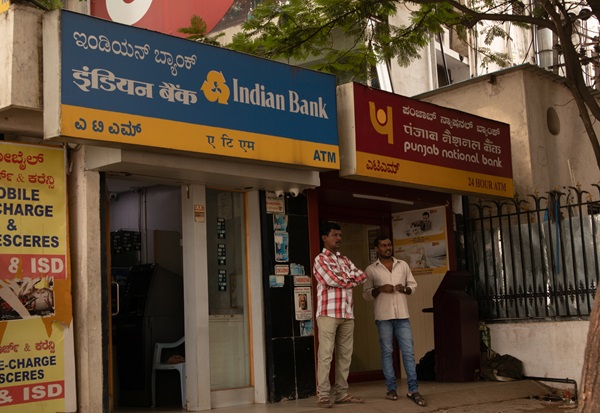Indian banks today sit atop record profits, strong capital buffers, and vast retail franchises; yet they seem oddly unbank-like. The métier of banking, which is, risk-taking, structuring, and capital allocation, has been sterilised. Regulation seems to have driven risk off their balance sheets (though surprises shock occasionally, thanks to bad governance and operational risks), leaving them prudentially perfect but commercially primitive.
Over the past decade, India’s financial landscape has undergone a quiet inversion. Banks, particularly public sector ones, have retreated from complex or long-term lending. Instead, they prefer safer exposures: home loans, personal loans, government securities, and working capital.
But risk never disappears; it migrates. Non-banks such as mutual funds, private credit funds, insurers, and fintech NBFCs, now rival banks in supplying funds to the commercial sector. RBI’s Flow of Funds data shows that non-bank credit flows sometimes exceed those from banks.
Banks have become risk-light utilities: predictable, large, and dull. Their profits rise, but their relevance wanes.
Despite ambitions to be “global,” Indian banks remain domestically transactional and regulation-bound. They still operate much as they did two decades ago: collateral-dependent (on paper sometimes), retail-heavy, and slow to innovate. Yet, occasional mega frauds erode their hard-earned safety buffers.
The most telling example is the Shapoorji Pallonji high-yield bond privately placed with overseas investors — a complex, asset-backed structure that found no Indian bank participants. Deals requiring structuring or collateral innovation now bypass domestic lenders. The system has capital but not permission. While unlisted shares as collateral may be problematic, the management of a leading conglomerate appealing to the government to resolve internal disputes underscores how influence, not innovation, still drives outcomes, even when lending involves unlisted shares of a mega group.
Regulatory Zeal
Since the twin balance sheet crisis of the 2010s, India’s regulators have pursued prudence with near moral fervour. The cleanup was necessary; the consequence has been sterilisation. Basel III norms, high provisioning ratios, and granular exposure rules have turned banks into compliance machines. Yet, these measures have not prevented periodic crises or government bailouts of public and private banks.
Even as profits soar, private investment remains tepid. Corporate India increasingly taps private placements, AIFs, and foreign investors — channels beyond RBI’s regulatory reach. In driving risk out of the system, policy may have driven banks out of relevance.
This isn’t de-risking; it’s de-banking.
Public sector banks, which still control over 60% of system credit, embody this contradiction. Repeated government recapitalisations have kept them solvent but subservient — lenders of fiscal convenience rather than financial vision.
They lend freely when directed and freeze when unsupervised. Their excessive holdings of government securities show how banking has morphed into fiscal financing. Fraudsters still find loopholes, while genuine borrowers drown in documentation — penalising the prudent!
A decade after the bad-loan cleanup, the question lingers: have we merely swapped private recklessness for public risk aversion?
Private Credit
Into this vacuum have stepped private credit funds that are flexible, unregulated, and willing to underwrite deals banks cannot.
The Shapoorji Pallonji transaction, structured around future cash flows and high coupons, symbolises this shift. India’s most sophisticated credit is now being priced abroad because domestic regulation cannot accommodate it.
When the country’s most interesting deals are executed in Singapore or Dubai, one must ask whether Indian banks still practice banking at all.
Universal Illusion
The irony deepens under India’s so-called “universal banking” framework. Inspired by the 1998 Narasimham and 1999 Khan committees, it was meant to let banks straddle lending, investment, insurance, and advisory functions. Over time, however, regulation fractured that vision.
Banks can distribute mutual funds but cannot meaningfully underwrite corporate bonds; they can securitise loans but only under tight caps; they can co-lend with fintechs but not truly share risk. Multiple regulators oversee separate domains, each enforcing its own prudence. Integration, the very soul of universal banking, has been disallowed.
The result: India’s “universal” banks are universal in label, but monoline in function. Their global peers deploy integrated capital across structured and project finance. Indian banks remain deposit-rich but opportunity-poor.
The system thus exports innovation and imports caution. Risk intermediation, the essence of universal banking, has migrated offshore.
With higher-end risk driven out, the next growth frontier lies at the lower end of the credit-risk spectrum such as SMEs, gig workers, green finance. Yet even here, banks are hemmed in by regulation: strict co-lending rules, risk-weights, and securitisation caps. If nothing else works, it’s labeled “priority sector” or “infrastructure” lending.
If India wants banks to power the next investment cycle, it must let them re-enter the risk business, not recklessly, but intelligently. For that, they need boards of quality, not quantity.
Global Pretense
India’s largest banks talk of “going global,” but global banking is about sophistication, not size. MUFG built scale through project finance; DBS through digital integration. Indian banks, by contrast, treat international expansion as geography, not capability. Some public sector banks once maintained large foreign operations; it was prudent to trim them when it became clear they served diplomatic, not financial, purposes.
Those that remain hesitate, to price long-term risk or build structured finance desks. Their credit ratings limit funding spreads, and the ghosts of the 2010s bad-loan cycle still haunt credit committees. Fear of regulatory hindsight overrides business foresight. No amount of capital can compensate for that loss of conviction.
Reclaiming Risk
To restore vitality, Indian banking must rediscover its core purpose: risk intermediation. Three policy corrections are overdue:
a. Move from prevention to proportion.
Regulation should supervise, not suffocate. The recent RBI policy was well-intentioned in this respect. Well-capitalised banks should be granted flexibility in structured and long-tenor lending. End-use restrictions, especially on a temporal basis, needs rethinking.
b. Build capacity, not just compliance.
Risk modeling, structuring, and syndication desks must be rebuilt. India cleansed its balance sheets but hollowed its skill base.
c. Integrate banks and markets.
Banks should co-lend or participate with private credit and AIFs as senior lenders, distributing risk instead of hoarding it.
India has spent a decade disinfecting its banks; now it must let them recover.
If banks remain risk-averse, they may stay profitable, but lose policy relevance. As non-banks and offshore funds dominate corporate credit, India’s financial stability will depend on institutions it does not regulate. RBI data shows that half of commercial funding now originates outside the banking sector — in a supposedly bank-dominated economy! That irony should alarm policymakers: by protecting banks from failure, they may have protected them from success.
The country calls its institutions universal but makes them provincial; calls them global but denies them permission to innovate. Unless regulatory philosophy shifts from safety-first to risk-smart, Indian banks will keep growing in size while shrinking in purpose. As a policy imperative, focus needs to be on quality and not size in the context of Viksit Bharat target of two banks in the global top 20.
.png)




